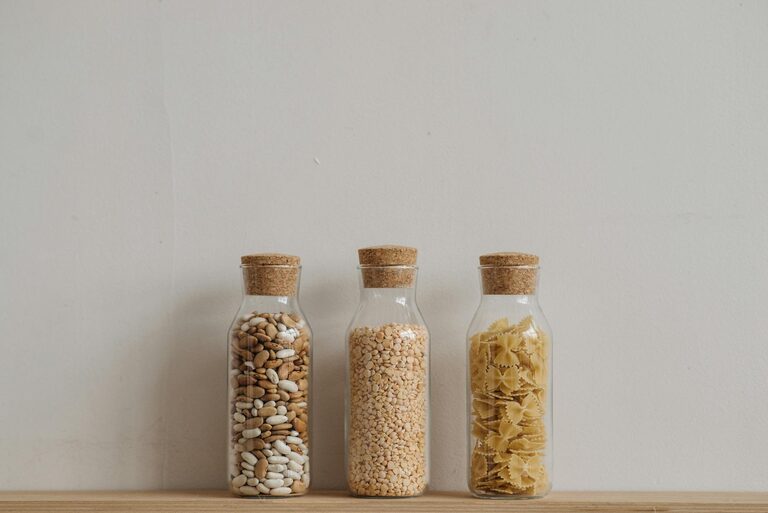Keeping your fridge and pantry tidy is not just about aesthetics—it helps reduce food waste, save money, and make meal preparation easier. A well-organized kitchen allows you to find ingredients quickly and maintain freshness. Whether you’re starting fresh or just looking to improve your current setup, this guide will walk you through practical steps to keep your fridge and pantry neat and efficient.
Why Organizing Your Fridge and Pantry Matters
Having an organized fridge and pantry can:
– Prevent food spoilage by making items easier to locate
– Help you keep track of what you have, so you avoid overbuying
– Create more space to store groceries
– Reduce stress during meal prep by knowing where everything is
The key is to develop a system tailored to your needs and maintain it over time.
Preparing for Organization: What You Need
Before diving in, gather the following supplies:
– Cleaning gloves and mild cleaning spray or soapy water
– Containers or bins for grouping similar items
– Labels and markers for identification
– Shelf liners (optional) to protect surfaces
– Trash bags for expired or unwanted items
Clearing your workspace and having tools on hand makes the process smoother.
Step 1: Declutter and Clean Your Fridge
Remove Everything
Begin by taking all food items out of your fridge. This helps you:
– See exactly what you have
– Identify expired or spoiled products
– Make cleaning easier
Check Expiration Dates
Sort through everything and discard anything that is past the expiration date, spoiled, or no longer fresh. If you find items you rarely use but still good, consider donating unopened packages.
Clean the Fridge
Wipe down all shelves, drawers, and walls with a gentle cleaning solution. Remove and wash any detachable parts. Dry everything thoroughly before putting items back.
Step 2: Organize Your Fridge Efficiently
Use Zones for Different Food Types
Assign specific areas for different types of food to keep items accessible and reduce cross-contamination:
– Top shelves: Leftovers, ready-to-eat items, dairy products
– Middle shelves: Eggs, packaged foods, beverages
– Bottom shelves: Raw meats and fish (place on trays to catch drips)
– Crisper drawers: Fruits and vegetables (separate if possible)
– Door shelves: Condiments, juices, and small jars (avoid storing eggs or milk here due to temperature changes)
Use Clear Containers and Labels
Group smaller items like cheese slices, deli meats, or snack packs in clear containers. Label them with contents and dates to easily track freshness.
Avoid Overpacking
Keep enough space for air circulation to maintain consistent temperature and freshness. Remove any bulky packaging.
Step 3: Declutter and Clean Your Pantry
Empty the Pantry Completely
Take out all cans, boxes, and other items. Check expiration dates and toss anything expired or stale. Group similar products together to evaluate your inventory.
Clean Shelves and Storage Areas
Vacuum or wipe down shelves to remove crumbs and dust. Consider adding shelf liners to protect surfaces and simplify future cleaning.
Step 4: Organize Your Pantry Smartly
Group Similar Items
Arrange pantry items by categories such as:
– Grains and pasta
– Baking supplies
– Canned goods
– Snacks
– Spices and herbs
– Breakfast items
Grouping helps you find things fast and plan meals better.
Use Containers and Bins
Store loose items like flour, sugar, and rice in airtight containers to keep them fresh and pest-free. Clear containers make it easy to see quantities.
Label Everything
Label shelves and containers to maintain order. You can use simple stickers or reusable chalkboard labels.
Optimize Shelf Space
Place frequently used items at eye level and less-used items higher or lower. Use stackable bins or tiered shelves to maximize vertical space.
Step 5: Develop Daily and Weekly Habits
Daily Tips
– Wipe spills immediately to prevent stains or stickiness
– Return items to their designated spots after use
– Check if any food needs to be eaten soon
Weekly or Bi-Weekly
– Review the fridge and pantry for expired or leftover food
– Wipe shelves and containers to keep them fresh
– Plan meals around what you have to minimize waste
Bonus Tips for Long-Term Success
– Consider labeling with “Use By” stickers when you buy perishable items
– Rotate foods so older items are in front and used first (first in, first out)
– Freeze extra portions to extend shelf life
– Keep a running grocery list based on what’s running low
Final Thoughts
A tidy fridge and pantry not only create a more pleasant cooking space but also encourage smarter shopping and eating habits. With just a little effort and consistent upkeep, you can maintain a neat and efficient kitchen that saves time, money, and frustration.
Happy organizing!

